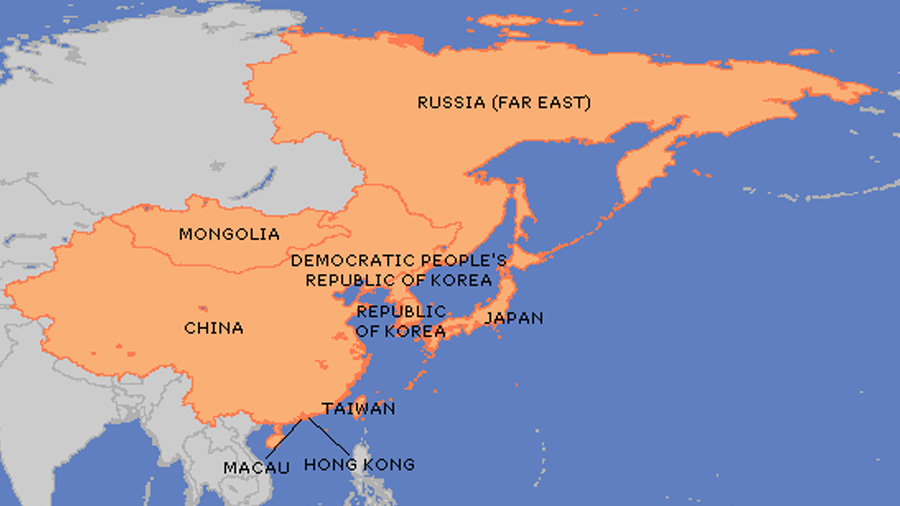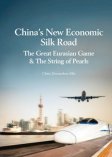Investment Opportunities for Asia in Russia’s Far East


Russia held its annual Far Eastern Economic Forum in Vladivostok last week, with both Russian President Vladimir Putin and Chinese President Xi Jinping attending. China sent the largest delegation, closely followed by Japan and South Korea.
The North-East region of Asia has always been somewhat quixoitic, as I found while serving as Vice-Chair of the UN Greater Tumen Initiative from 2006 to 2012. That body, which also includes Mongolia and (occcasionally) North Korea, is aimed at regional development. With North Korea problematic, and the Russian Far Eastern Province of Primorsky Krai at the time one of Russia’s most backward, it was an uphill battle to gain any traction in terms of recognising the investment potential. That has now changed.
North Korea these days appears to be taking its first steps to come out of the cold, and Primorsky Krai, having had a serious dressing down from Vladimir Putin a few years ago when it ranked as Russia’s worst performing region, began to get its house in order. Now, its regional capital of Vladivostok has not just an important international conference, but a large free trade zone, the largest diamond processing centre in the world, and a status as a Russian offshore financial centre. With access to Siberia’s oil and gas industry, the development of Vladivostok has been among the highest among Asian cities in the past three years.
Now it is attracting the big guns – Xi Jinping’s presence at the forum was his first. But what is the attraction of Russia’s Far East?
Russia has been adopting new measures to counter the effect of Western sanctions, and these include a distinct pivot towards the East as well as measures to improve investment incentives and money supply. These are working – Russian investment in Vietnam as a result of the latter signing a Free Trade Agreement with the Moscow-backed Eurasian Economic Union have seen trade climb from essentially zero to US$20 billion in just two years. It is not an uncommon sight now to see Vietnamese traders lugging huge boxes of goods as check-in baggage at Russian airports. Think that’s small change? Russia-China bilateral trade was US$87 billion in 2017 and is expected to hit US$100 billion this year. To put that into context, that’s about 65 percent of the trade volume as China did with Germany in 2017, yet is growing at a far faster rate. China-Russian trade is on track to top China-German trade within the next four years. Indeed, Russia-China trade is growing faster than that of the EU.
Russia is generally only recognized as an oil, gas, and mineral play, and this is borne out by some of the large deals that have occurred between China and Russia in the last couple of years. One of the largest was CEFC’s (China Energy) US$9.1 billion acquisition of a minority stake in Russia’s Rosneft, while China’s Fosun also spent close to a billion to acquire 10 percent of Russian gold producer Polyus. The two countries have also invested US$2 billion in the Russia-China Investment Fund, and have used this in 19 projects, including China taxi service Didi Chuxing and Russian hypermarket Lenta. Companies such as Alibaba and Unionpay are also investing heavily in Russia, the former with an eye on Russia’s consumer market of 144 million and Unionpay to cater to the growing numbers of China tourists and traders visiting the country.
Sanctions have also had an impact. They have influenced Russian financial policy, and have seen Russia become one of the least indebted countries in the world and with one of the lowest inflation rates. This is leading despite sanctions to a platform of stability and predictiveness regardless of how the West behaves politically towards Moscow. Russia has one of the world’s lowest rates of government debt to GDP. That political influence also extends to government bond rankings. Fitch and Moody’s both rate Russian bonds as BBB- and Ba1 while Standard & Poor’s rates them BB+, which is high yield investment grade. Asian investors are buying the notion that the former are negatively politically influenced, while S&P are more accurate. Sure enough, Asian investors in Hong Kong, Taiwan, China, Singapore, and Korea are buying Russian Eurobonds. Russia meanwhile has dumped nearly its entire national holdings of US securities. Both China and Russia have been building up their gold reserves the past couple of years leading some analysts to question the longer term stability of the US dollar.
Other issues are a work in progress. Both China and Russia want to establish financing ties without having to use intermediary banks in the United States, which currently monitors all international transactions as they must pass through the US controlled, global interbank system. The US says it uses this as a crime prevention mechanism, critics say it gives the US unfair control and monitoring capability of other nation’s monies, and now uses this data to influence sanctions on developing trade corridors that are not to the advantage of American manufacturers. Russian businesses sending money to China for example (and vice-versa) must do this via a US interbank facility. China’s Unionpay and Russia’s Karta Mir are starting to overcome this for individual users, but in terms of larger, corporate amounts, the US interbank system still holds sway. This is one reason the Chinese want to develop the RMB as an alternative international currency without the need to pass via American interbank networks. However, this process takes time, and will probably need two-three decades to make a sizeable impact.
Russia’s traditional points of commerce have been Moscow and St. Petersburg; however, the onus is now on developing longer term development strategies and inter-connectivity with Asia. This ties in directly with China’s Belt and Road Initiative. An example is the Moscow-Kazan high speed rail, which we wrote about 18 months ago. That is being built with the assistance of Chinese engineering and effectively sees Russian high speed rail extend from the western borders it has with the European Union right through to the Ural mountains. There is talk of further extending that through to Beijing.
Other developments include shipping, with Maersk currently testing a new Arctic container class of ships using the Northern Sea Passage. The Venka Maersk, the line’s new class of commercial vessel suitable for use in the far north, left Vladivostok on August 23 and is about to arrive in St. Petersburg, carrying frozen high-quality Russian fish and South Korean electronics. The route cuts weeks off the current Suez canal or Cape Horn Africa routes.
Getting access to Russia’s consumer hinterland is also going to become rather easier. The recently signed Caspian Sea Agreement allows for the development of larger container vessels on the Caspian Sea and shipment up the Volga. That means Chinese goods entering the Caspian from Kazakhstan and into Russia’s heartland, and vice versa.
The implications of these developments are huge. Although Russia is not a popular destination for Western investors at present, infrastructure work is carrying on regardless. Both China and Russia are taking huge strides to better connect Eurasia and this is impacting upon Far Eastern Russia and eventually Central Russia as well. Cities such as Vladivostok are starting to boom as new and dynamic Asian trade hubs. The city is just a three hour flight from Shanghai, two and a half from Busan in South Korea, and five hours to Osaka. It is already well connected to all by ferry.
With infrastructure and trade investments carrying on apace, it will only be a matter of time before Vladivostok becomes Asia’s new investment darling, and Far East Russia becomes the investment hot spot spoken about in Hong Kong, Shanghai, Seoul, and Tokyo. It is time for investors in Asia to start thinking about the real Far East.
About Us
Chris Devonshire-Ellis is the Chairman and Founding Partner of Dezan Shira & Associates. He has extensive knowledge of the developing Far East, while the practice assists foreign investors throughout the region, and has offices throughout China and Russia. Please contact silkroad@dezshira.com for assistance or visit our website at www.dezshira.com
 Related Reading:
Related Reading:
![]() Russia Gives Free Land, Incentives to Invest in Asian Far East
Russia Gives Free Land, Incentives to Invest in Asian Far East
![]() A Brave New World: China, Russia, and ASEAN Lead Eurasian Free Trade
A Brave New World: China, Russia, and ASEAN Lead Eurasian Free Trade
![]() SPIEF 2018 Omits Mentioning the US by Name but Points Fingers at “Global Betrayer of Trust”
SPIEF 2018 Omits Mentioning the US by Name but Points Fingers at “Global Betrayer of Trust”
Silk Road and OBOR Business Intelligence
Dezan Shira & Associates´ Silk Road and OBOR investment brochure offers an introduction to the region and an overview of the services provided by the firm. It is Dezan Shira´s mission to guide investors through the Silk Road´s complex regulatory environment and assist with all aspects of establishing, maintaining and growing business operations in the region.
China’s New Economic Silk Road
This unique and currently only available study into the proposed Silk Road Economic Belt examines the institutional, financial and infrastructure projects that are currently underway and in the planning stage across the entire region. Covering over 60 countries, this book explores the regional reforms, potential problems, opportunities and longer term impact that the Silk Road will have upon Asia, Africa, the Middle East, Europe and the United States.







